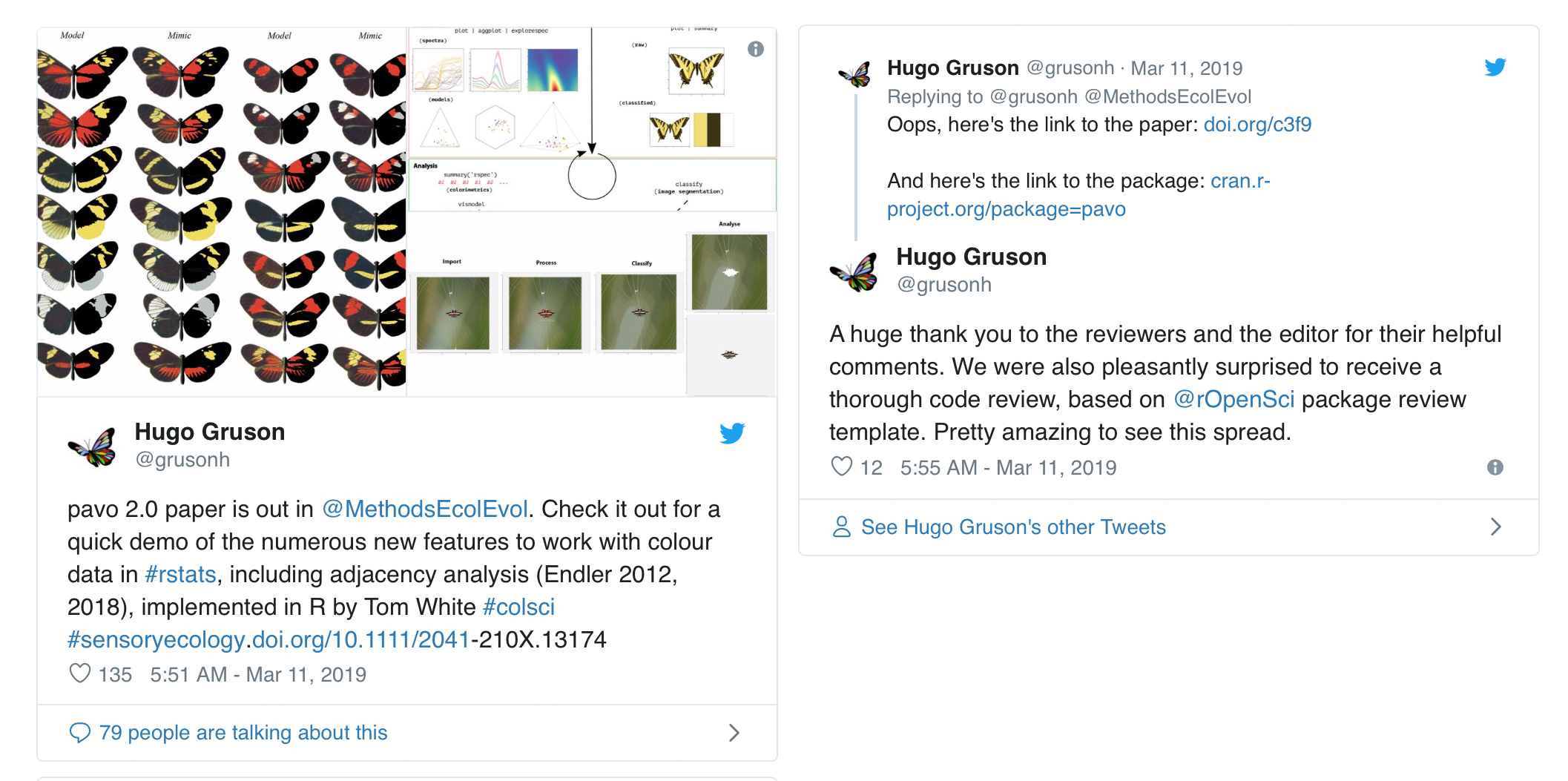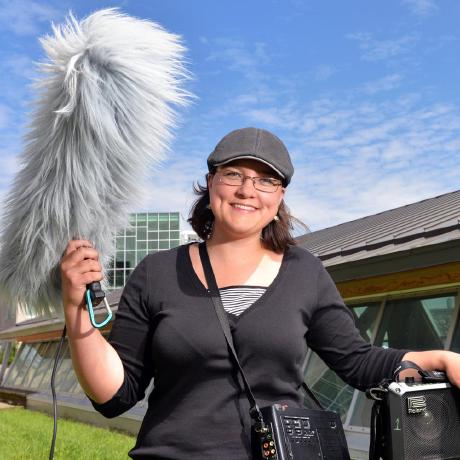All posts (Page 69 of 126)
conditionz is a new (just on CRAN today) R package for controlling how many times conditions are thrown.
This package arises from an annoyance in another set of packages I maintain: The brranching package uses
the taxize package internally, calling it’s function taxize::tax_name(). The taxize::tax_name() function
throws useful messages to the user if their API key is not found, and gives them instructions
on how to find it. However, the user does not have to get an API key. If they don’t they then get subjected to
lots of repeats of the same message.
🔗
 Stefanie Butland, rOpenSci Community Manager
Stefanie Butland, rOpenSci Community Manager
Some things are just irresistible to a community manager – PhD student Hugo Gruson’s recent tweets definitely fall into that category.

I was surprised and intrigued to see an example of our software peer review guidelines being used in a manuscript review, independent of our formal collaboration with the journal Methods in Ecology and Evolution (MEE). This is exactly the kind of thing rOpenSci is working to enable by developing a good set of practices that broadly apply to research software.
...“Security” can be a daunting, scary, and (frankly) quite often a very boring topic. BUT!, we promise that this Community Call on May 7th will be informative, engaging, and enlightening (or, at least not boring)!
Applying security best practices is essential not only for developers or sensitive data storage but also for the everyday R user installing R packages, contributing to open source, working with APIs or remote servers. However, keeping up-to-date with security best practices and applying them meticulously requires significant effort and is difficult without expert knowledge. On this Call you’ll hear about how the ropsec package can help you and you’ll learn the inner secrets of maintaining confidentiality, integrity, and availability throughout all your data science workflows.
🔗
Importance of Hydrology
Given that liquid water is essential to life on Earth, water research cuts across numerous disciplines including hydrology, meteorology, geography, climate science, engineering, ecology, and more. Numerous R packages have emerged from this diversity of approaches, and we recently gathered many of them into a new rOpenSci task view which we broadly titled ‘Hydrology’ and published to CRAN. Our intent is to be exhaustive and compile R packages to access, model, and summarise information related to the movement of water across the Earth’s landscape. We hope to contribute to a nascent community of hydrological R users and develop an infrastructure of packages that provide a comprehensive toolkit for water practitioners who use R as their preferred computational analysis tool. Making sense of water data is critical to understanding the response of landscapes to a changing climate. Consolidating water-related packages will promote their usage and discovery and ultimately facilitate reproducible workflows for water research. Since this is a new task view, it serves our purpose to evaluate the current State of Hydrology in R and look at the interdependency of hydrology packages relative to some better known collections of packages in the general R ecosystem.
...Version 7.0.0 of drake just arrived on CRAN, and it is faster and easier to use than previous releases.
install.packages("drake")
🔗
Recap
Data analysis can be slow. A round of scientific computation can take several minutes, hours, or even days to complete. After it finishes, if you update your code or data, your hard-earned results may no longer be valid. How much of that valuable output can you keep, and how much do you need to update? How much runtime must you endure all over again?
...



